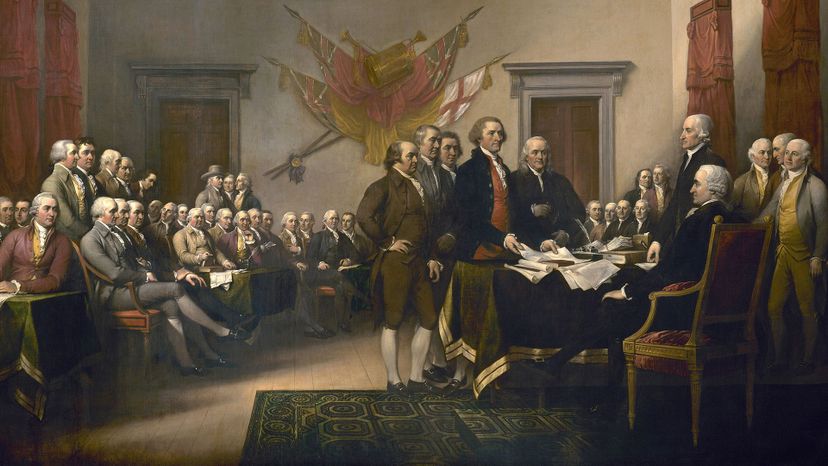
Image: refer to hsw
About This Quiz
The U.S. Constitution is a document with a history, and most of us learn all about it in school -- well, maybe not all about it. This Constitution Day, test your knowledge of some lesser-known facts about the U.S. Constitution.
Patrick Henry turned down an invitation to the Constitutional Convention because:
He was in ill health.
He was going to be in France at that time.
He didn't trust it.
Which national holiday did George Washington proclaim should honor the success of the Constitution?
Christmas
Thanksgiving
Constitution Day
Advertisement
Which of the Founding Fathers did not sign the Constitution?
George Washington and John Adams
Alexander Hamilton and Thomas Jefferson
John Adams and Thomas Jefferson
The framers of the Constitution met with the original purpose of:
revising the Articles of Confederation
creating a new U.S. Constitution
debating the role of slavery in the new country
Advertisement
What was the longest period in which the fewest Constitutional amendments were passed?
11 years
21 years
61 years
How many times have legislators tried to remove the Electoral College requirement from the Constitution?
20
200
500
Which of these was a common reason why many Americans didn't initially support the new Constitution?
It was too short.
It had no Bill of Rights.
It did not abolish slavery.
Advertisement
Which state name is misspelled in the signature section of the Constitution?
Pennsylvania
Virginia
Florida
Advertisement
Where can you go and view the original U.S. Constitution today?
National Archives
Library of Congress
White House
Advertisement
Advertisement
Who was the oldest delegate to sign the U.S. Constitution?
George Washington
Benjamin Franklin
James Madison
Advertisement
What did the Connecticut Compromise result in?
abolition of slavery
right of women to vote
Congress divided into two houses
What name was given to the series of documents designed to win support for the Constitution among the public?
Virginia Plan
Federalist Papers
Magna Carta
Advertisement
Which of the following is not part of the Bill of Rights?
voting rights for African Americans
freedom of press
right to bear arms
Who was the president of the Constitutional Convention?
Alexander Hamilton
James Madison
George Washington
Advertisement
The Constitution originally did not start with the famous line, "We the People of the United States..."
TRUE
FALSE
Why did the delegates reject the idea of opening the convention with prayer?
They were mostly atheists.
They couldn't afford to.
They wanted to keep religion out of government.
Advertisement











